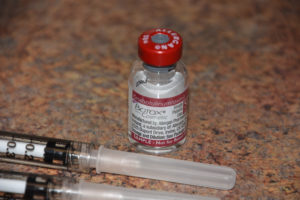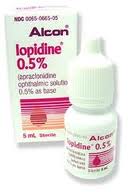
The eyebrow allows for many lift options because of the different muscles that surround it. Perhaps a patient feels they look tired and aged, maybe even angry. A medial brow lift can help to bring the middle of the brow up just enough to eliminate the heavy, tired look some people have. Female patients typically prefer to have the lateral part of their brow lifted, for a more aesthetically pleasing appearance. In addition, some people may ask for, although many warn against a “Mr. Spock” brow lift. All of these options along with a few others make it easy to see why the concept of a “Botox Brow Lift” is so appealing.
Muscles such as the corrugator, orbicularis oculi and procerus all work to move the forehead and eyebrows and help to create all of these lifts. These muscles each pull in different directions, some lifting and others depressing, therefore known as agonist and antagonist muscles. Botox is used to paralyze or weaken one action, to enhance the opposite action. A patient is left with brow ptosis instead of a brow lift when the wrong part of the muscle is injected, or if any Botox diffuses to another muscle.
Eyelid ptosis (lid droop) is a well known side effect or complication of Botox when injected around the area of the eye. Ptosis has been found to occur in approximately 5% of patients who receive Botox injections and can occur up to two weeks after receiving the injections. One of the main causes of ptosis from Botox injections is the diffusion of the solution into the levator palpebrae superioris muscle, the elevator muscle of the upper eyelid. This muscle is responsible for elevation of the upper eyelid, allowing it to open fully when the muscle contracts.
Ptosis of the eyebrow with Botox can be largely avoided with careful injection technique. All injections should remain at least above the eyebrow and never injected directly into the eyebtow or brow bone area. In addition, some research says that massage by the injector, pulling the solution up and away from the eyebrow may also help prevent ptosis from occurring. Finally, some research recommends patients remain in a vertical position for at least two to three hours after their injections while the toxin is binding. Once the toxin is bound, there is less to diffuse, therefore decreasing the risk of ptosis.
Despite careful injection techniques, Botox injections into the forehead and around the eyebrow area can still happen. We see it about once a year in our practice. When it happens, it is understandably disconcerting to the patient. There are no drugs to directly reverse or unbind Botox and more Botox injections elsewhere will not undo the upper eyelid ptosis.

Without the eye drop treatment, the adverse effects of Botox will wear off…just like it does for its cosmetic effects. However and fortunately, the negative effects of upper eyelid ptosis seem to wear off much sooner than that of its positive cosmetic benefits.
Dr. Barry Eppley
Indianapolis, Indiana


